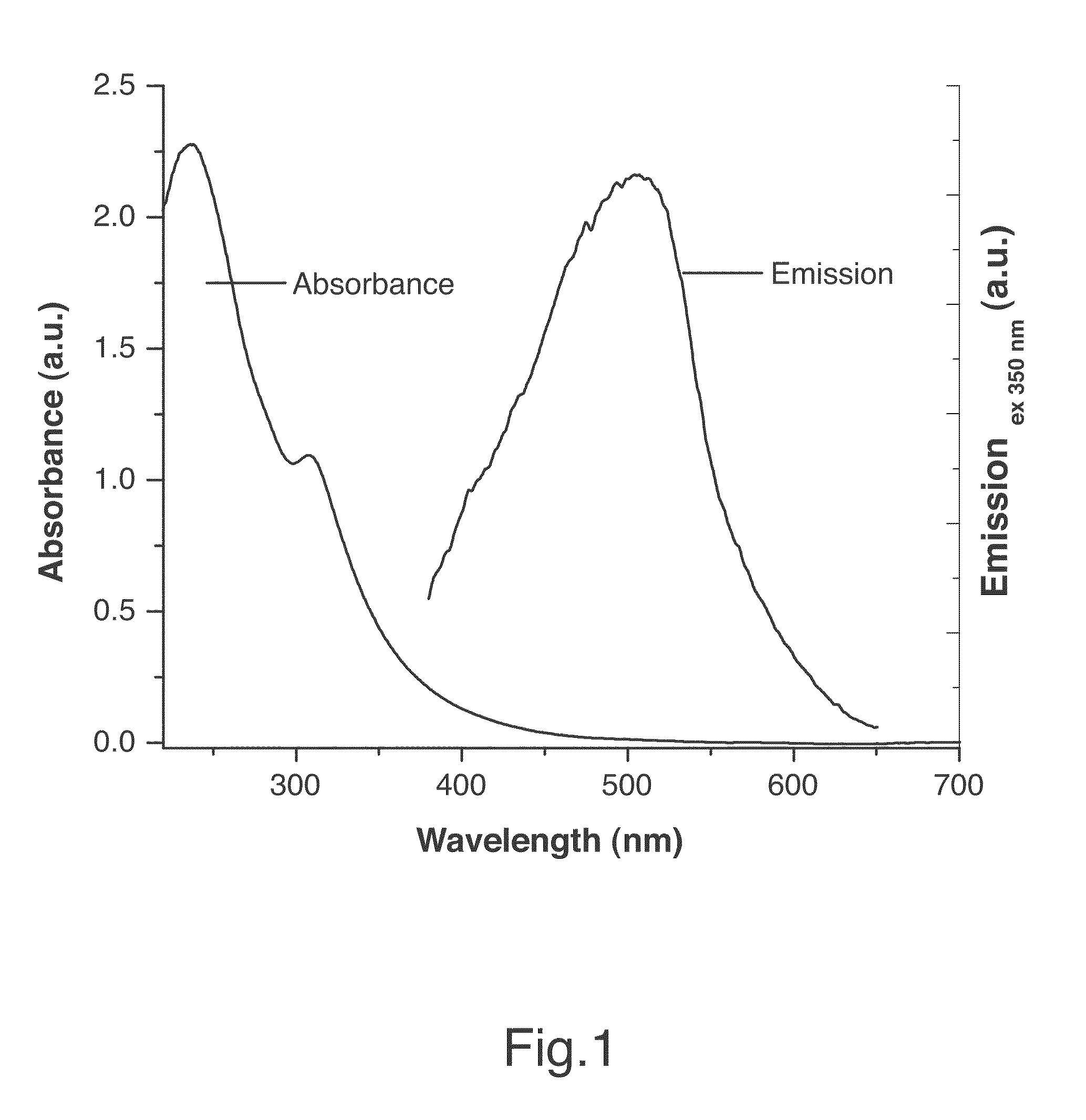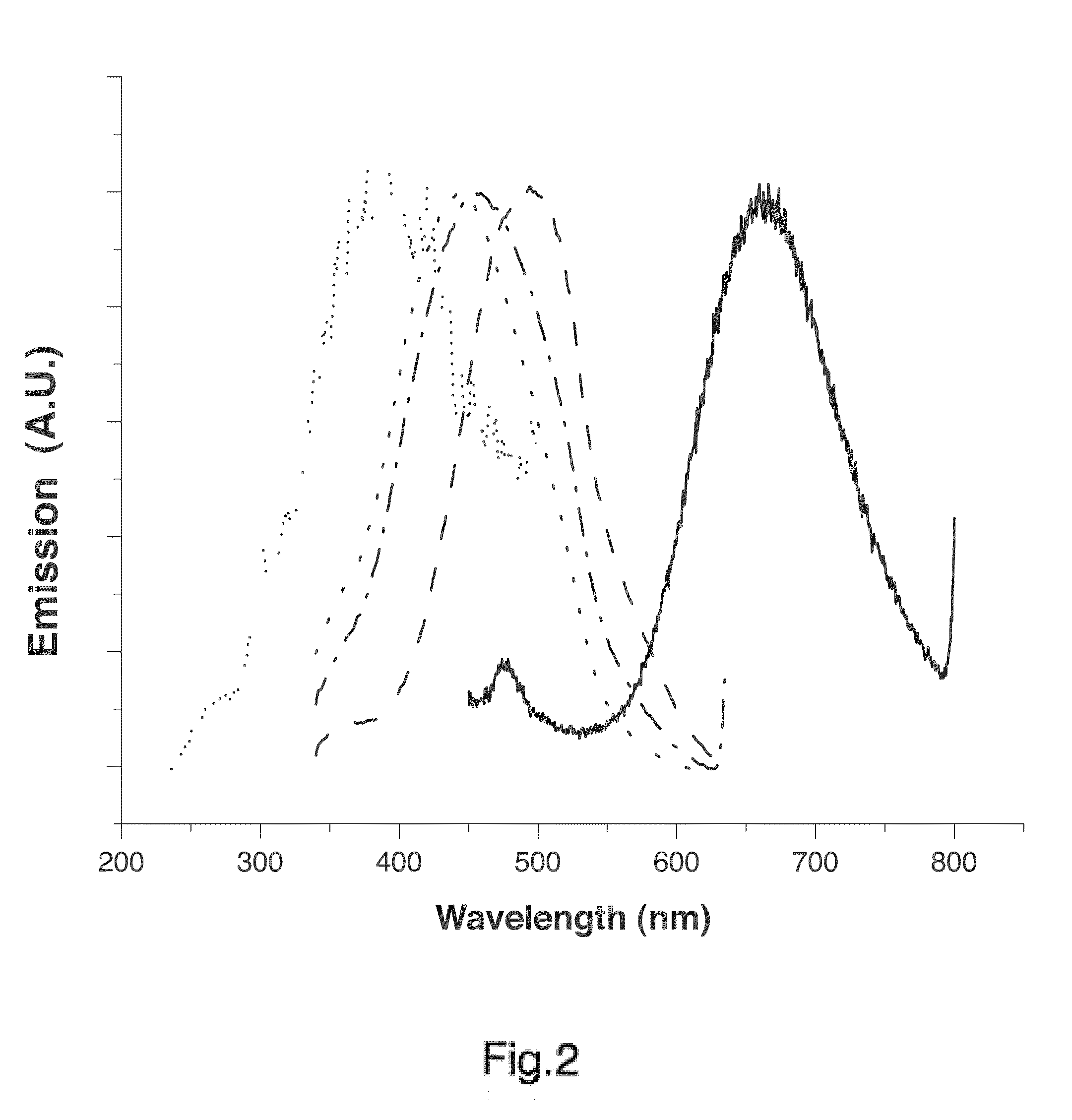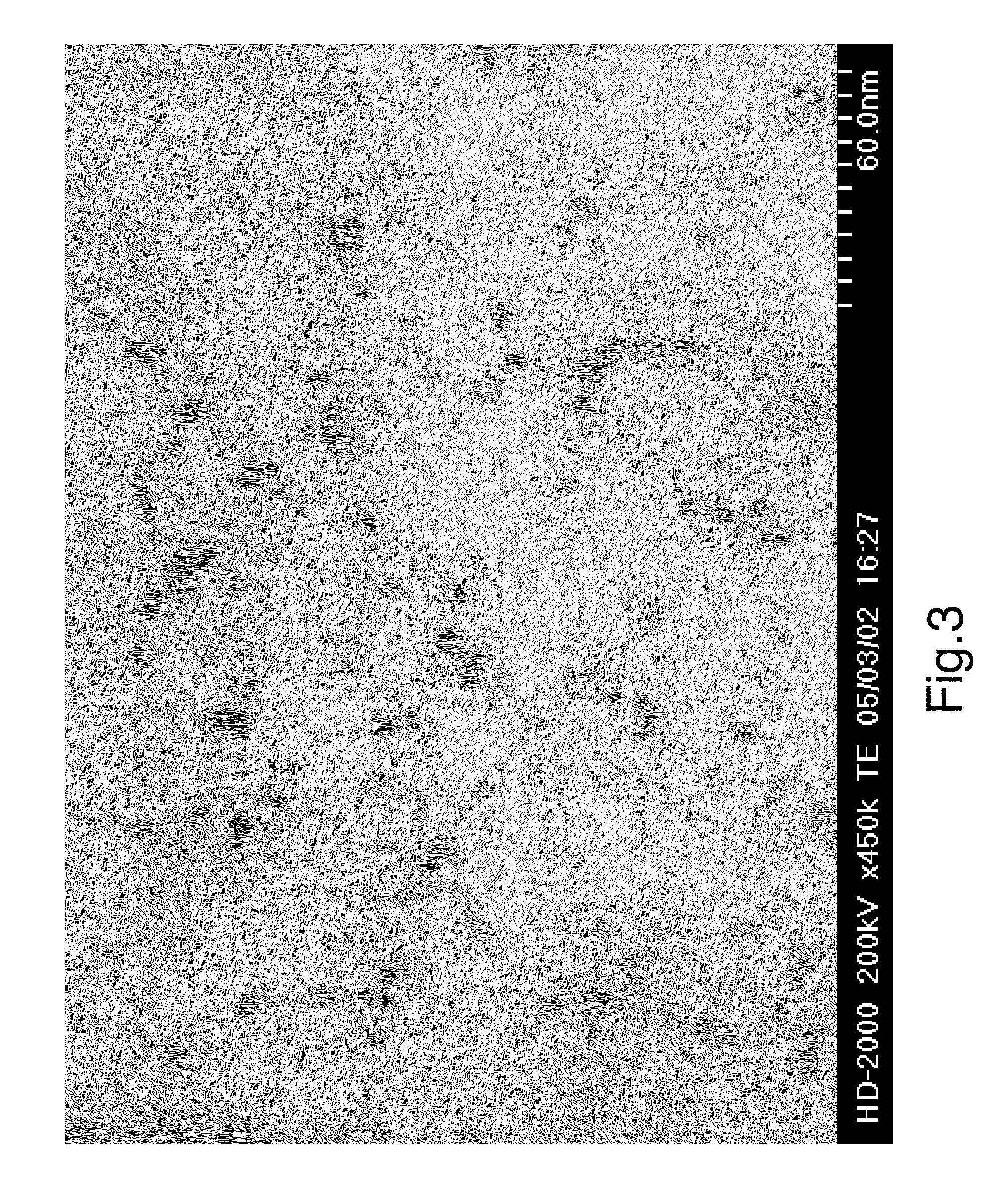Composite nanoparticles, nanoparticles and methods for producing same
The method of collapsing polymeric materials around precursor moieties and subsequent cross-linking and modification provides a cost-effective and environmentally friendly route to producing diverse nanocomposite particles, addressing the limitations of existing methods by simplifying the production process and enhancing particle functionality.
- Summary
- Abstract
- Description
- Claims
- Application Information
AI Technical Summary
Benefits of technology
Problems solved by technology
Method used
Image
Examples
example 1
Polycation Collapse with (−1) Anion
[0124]In a plastic 400.0 ml beaker, 3.0 ml of poly(diallyldimethylammonium chloride) (PDDA) [Sigma, Average Mw 400-500K, 20 wt % in water] was diluted to 300 ml with deionized water. The solution was stirred for 10 minutes. 5.0 ml aliquots were obtained, and placed in 20 ml scintillation vials. To each was added dropwise with vigorous stirring 5.0 ml of aqueous NaCl solutions of different concentrations (2 mM-60 mM) yielding 10 mL of Cl− / PDDA solutions with different [Cl−] between 1 and 50 mM and a final PDDA concentration of 1 mg / ml. The relative viscosity of each solution was measured with an Ostwald viscometer. The viscosity as a function of NaCl concentration changed suddenly at approximately 10 mM; this was taken as the PDDA collapse point with Cl−, such that at lower concentrations, the PDDA is primarily in an extended configuration.
Example 2
Polycation Collapse with (−2) Anion
[0125]In a plastic 400.0 ml beaker, 3.0 ml of poly(diallyldimethyla...
example 2
Polycation Collapse with (−3) Anion
[0126]In a plastic 400.0 ml beaker, 15 ml of poly(diallyldimethylammonium chloride) (PDDA) [Sigma, Average Mw 400-500K, 20 wt % in water] was diluted to 300 ml with deionized water. The solution was stirred for 10 minutes. 5.0 ml aliquots were obtained, and placed in 20 ml scintillation vials. To each was added dropwise with vigorous stirring 5.0 ml of aqueous Na3PO4 solutions of different concentrations (2 mM-50 mM) yielding 10 mL of PO43− / PDDA solutions with different [PO43−] between 1 and 25 mM and a final PDDA concentration of 5 mg / ml. The relative viscosity of each solution was measured with an Ostwald viscometer. The viscosity as a function of NaCl concentration changed suddenly at approximately 2 mM; this was taken as the PDDA collapse point with PO43−, such that at lower concentrations, the PDDA is primarily in an extended configuration.
example 4
Polyanion Collapse with (+1) Cation
[0127]In a 400 ml plastic beaker, 400.0 mg of (PAA) (Sigma, Average MV 1.2 million) was dissolved in 200 ml deionized water. The plastic beaker was immersed in a hot water bath (approximately 80-90° C.) and was stirred vigorously for at least 30 minutes or until all of the solid PAA has dissolved. Once the solution has cooled to room temperature, the pH was adjusted to 6.8 using 0.1 M NaOH. pH measurements were done using narrow range pH paper. 5 ml aliquots of the pH adjusted PAA were obtained and to each was added 5.0 ml aliquots were obtained, and placed in 20 ml scintillation vials. To each was added dropwise with vigorous stirring 5.0 ml of aqueous NaCl solutions of different concentrations (0.2 mM-10.0 mM) yielding 10 mL of Na+ / PDDA solutions with different [Na+] between 0.1 mM and 5.0 mM and a final PAA concentration of 1 mg / ml. The relative viscosity of each solution was measured with an Ostwald viscometer. The viscosity as a function of Na...
PUM
| Property | Measurement | Unit |
|---|---|---|
| Wavelength | aaaaa | aaaaa |
| dimensions | aaaaa | aaaaa |
| mean diameter | aaaaa | aaaaa |
Abstract
Description
Claims
Application Information
 Login to View More
Login to View More - R&D
- Intellectual Property
- Life Sciences
- Materials
- Tech Scout
- Unparalleled Data Quality
- Higher Quality Content
- 60% Fewer Hallucinations
Browse by: Latest US Patents, China's latest patents, Technical Efficacy Thesaurus, Application Domain, Technology Topic, Popular Technical Reports.
© 2025 PatSnap. All rights reserved.Legal|Privacy policy|Modern Slavery Act Transparency Statement|Sitemap|About US| Contact US: help@patsnap.com



